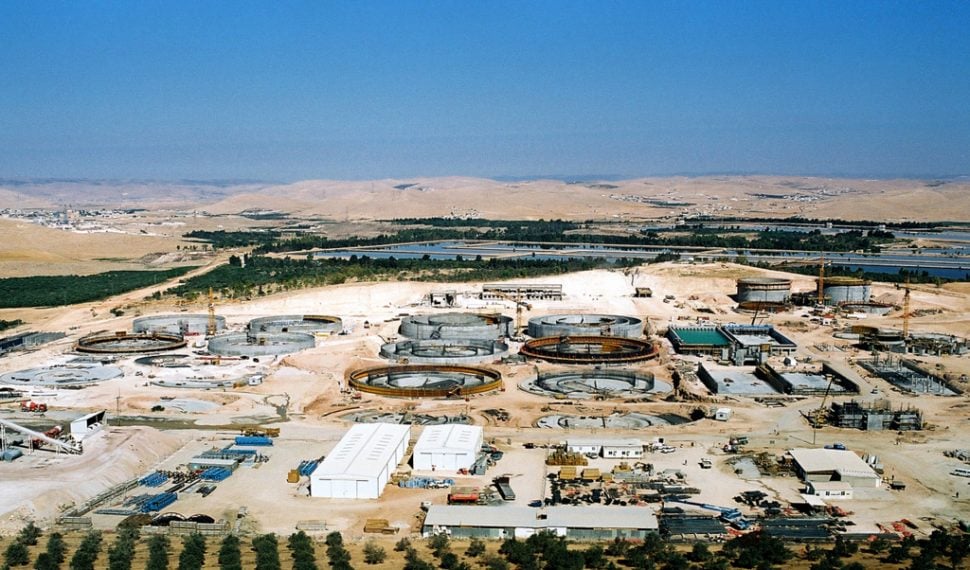
What is Wastewater Reuse?
The term ‘wastewater’ refers to any water that is no longer wanted. In other words, it is the used/spent water discharged by households (from bathing, washing, flushing toilets, etc.), agriculture and industrial facilities. About 99% of wastewater is water and only 1% is solid waste. Therefore, wastewater has great potential to mitigate the freshwater shortage in arid and semi-arid regions.
Wastewater reuse or recycling can be defined as ‘using wastewater or reclaimed water from one application for another application. The deliberate use of reclaimed water or wastewater must be in compliance with applicable rules for a beneficial purpose (landscape irrigation, agricultural irrigation, aesthetic uses, groundwater recharge, industrial uses and fire protection).’[1]
Types of wastewater reuse can be divided into the following categories:[2]
- Urban reuse: irrigation of parks, playgrounds, yards, highway medians and residential landscapes, as well as for toilet flushing and fire protection in commercial and industrial buildings.
- Agricultural reuse: irrigation of non-food crops, such as fodder and fibre, commercial nurseries and pasture lands. For food crops, high-quality treated water is used.
- Recreational impoundments: ponds and lakes.
- Environmental reuse: creating artificial wetlands, enhancing natural wetlands and sustaining stream flows.
- Industrial reuse: mainly for process water and cooling water.
- Groundwater recharge: via direct injection to groundwater aquifers.
Overview of wastewater treatment process
Wastewater treatment is the process of removing contaminants from water through engineered physical, chemical and biological processes to produce an effluent that can be safely reused or discharged to the environment. There are four major stages of wastewater treatment:
- Preliminary treatment involves screening and grit-removal units to remove large and coarse objects found in the raw wastewater (sanitary items, plastics and rags, hair, rocks and gravel) that may block or damage mechanical equipment.
- Primary treatment separates the suspended solid matter from the wastewater by discharging the wastewater into sedimentation tanks to allow the solids to settle. The settled solids, called sludge, are scraped from the bottom of the tanks by large scrapers and pumped away for further treatment.
- Secondary treatment removes the biodegradable organics, suspended solids and nutrients by pumping the wastewater into aeration systems and biological treatment systems.
- Tertiary treatment removes specific constituents that cannot be removed by the previous steps, such as refractory organics, heavy metals and dissolved solids
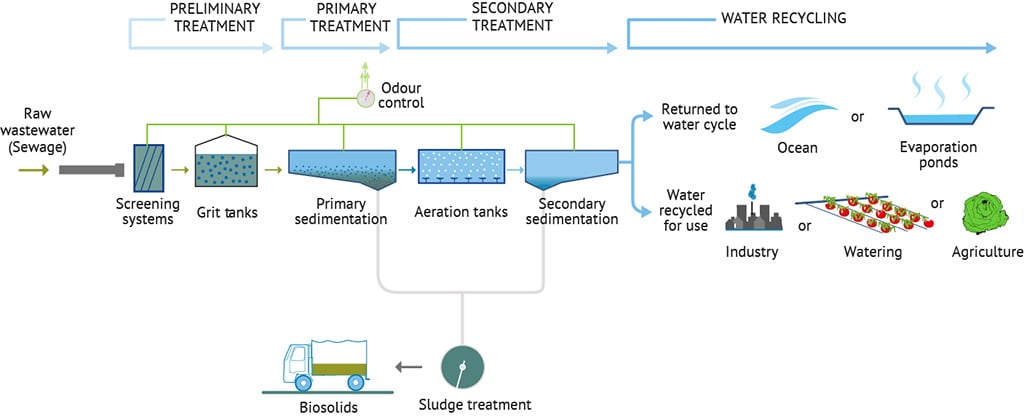
Why is Wastewater Reuse Important for MENA Countries?
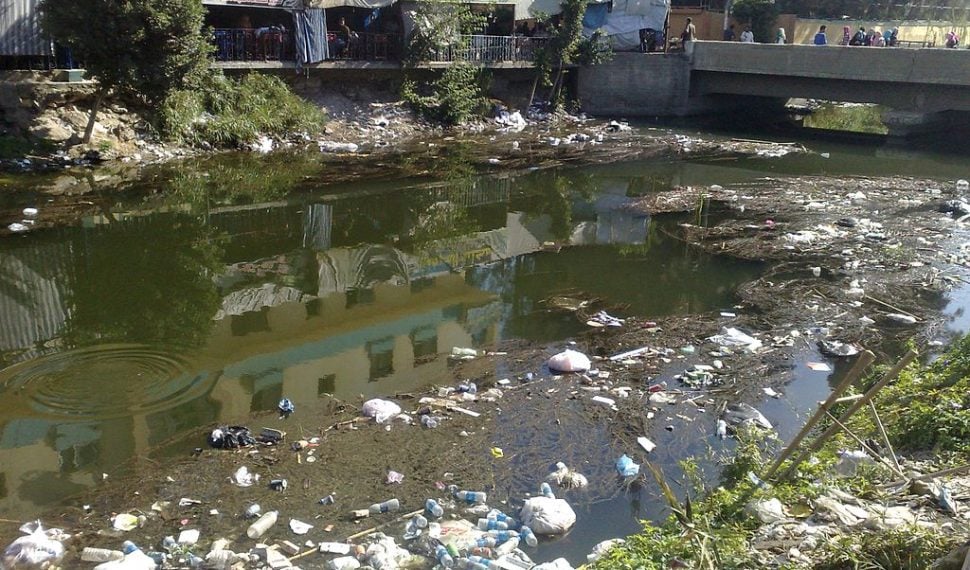
Most of the MENA region is characterized as arid or semi-arid. The region ran out of renewable fresh water decades ago, in the sense that it has been unable to meet its food requirements from the freshwater resources available within its boundaries.[3] The MENA region has 6% of the global population but only 1% of freshwater resources.[4] The countries in the region depend on seasonal rainfall and a small number of rivers, some of which carry run-off from other countries, and often rely on fragile, and sometimes non-renewable, aquifers. Consequently, their economies are much more sensitive to the way that water is extracted, conveyed and consumed than the economies of other regions.[5] At the same time, the continuous over-pumping of groundwater lowers the water table, increases the groundwater salinity levels, deteriorates the groundwater quality and causes ecological degradation.[6]
Consequently, there is a need for new non-conventional water resources, such as water desalination, wastewater and rain harvesting, to meet the increasing demand. Wastewater reuse is gaining increasing attention for groundwater recharge and irrigation, since agriculture is the dominant water user in the region.[7] Based on human consumption of fresh water in water-stressed countries, such as in the MENA region, the estimated amount of wastewater produced per capita ranges from 30-90m3 annually.[8] Moreover, the volume of wastewater from different sources has increased with population growth, urbanization, improved living conditions and economic development, and is expected to continue increasing in the future.[9]
Availability of water in the MENA region
Most MENA countries will have annual renewable water resources of less than 1,000m3/capita by the year 2025 (Fig. 1), according to estimates and projections of country-based populations and annual renewable water resources. Currently, only three countries (Iraq, Iran and Lebanon) have annual renewable water resources of more than 1,000m3/capita. Several countries, such as Kuwait, Libya, Qatar, Saudi Arabia, United Arab Emirates and Yemen, have annual renewable water resources of less than 100m3/capita. Moreover, 14 of the 20 MENA countries were classified as having a water deficit in 2010.[10]
The findings of the Intergovernmental Panel on Climate Change[11] for the MENA region predicted declining precipitation (−10% to −25%), declining run-off (−10% to −40%) and increasing evaporation (+5% to +20%). In addition, there are no opportunities to develop additional water resources. Moreover, higher temperatures will lead to greater evaporation from surface water storage reservoirs and losses in soil moisture; higher evapotranspiration rates in vegetated areas, leading to decreased run-off and groundwater recharge rates; and increased crop water requirements in agriculture.[12]
Figure 2. Annual renewable water resources in MENA countries (10^9m3/capita/yr).[13]
Water use in the MENA region
Agriculture is the dominant water user in most MENA countries. On average, 86% of the water withdrawn for different water user sectors is used in crop production. The water use for household and industrial activities is 8% and 6% respectively.[14]
The economies of most MENA countries depend on agriculture, although tourism and oil production are also important in several countries. Therefore, there are large differences in water use in the agricultural, domestic and industrial sectors. For example, Bahrain uses 29% of its total renewable water for agriculture. Other countries that use relatively less water than the MENA average in agriculture are Israel (58%), Qatar (59%), Lebanon (60%) and Jordan (65%). Iran (92%), Egypt (86%) and Iraq (79%) use the most water for agriculture.[15]
Figure 3. Water consumption (109 m3/yr) by sector in MENA countries[16]
Wastewater treatment in the MENA region
The volume of wastewater generated annually by the domestic and industrial sectors in the MENA region is 13.2 billion cubic metres (BCM), of which 5.7BCM (43.2%) is treated (Fig. 3).[17] The annual volume of untreated wastewater discharged in MENA countries is 7.5BCM (around 57% of the total wastewater produced in the region).[18]
Nearly 83% of treated wastewater is used in agriculture, whereas most of the partially-treated, diluted or untreated wastewater is used by urban and peri-urban farmers to grow crops.[20] Table 1 shows the sewerage rate and treatment level in urban and rural areas in several MENA countries. The countries also use different wastewater treatment options. For example, all the wastewater collected in Bahrain is treated by activated sludge and tertiary treatment processes, whereas less than 10% of the wastewater collected in Iran, Lebanon, Morocco and Libya undergoes treatment.[21]
Figure 4. Volume of wastewater produced, disposed of or used for irrigation in the MENA region.[19]
| Country | % of households connected to sewerage system (Urban) | % of households connected to sewerage system (Rural) | % of households connected to sewerage system (Overall) | Treatment rate (% of collected wastewater by volume) | Treatment rate (Est. % of wastewater by volume | Reuse efficiency (% of treated wastewater by volume) |
| Algeria | 92 | 50 | 77 | 46 | 40 | NA |
| Bahrain | NA | NA | 77 | 73 | 49 | 16-20 |
| Egypt | 74 | 18 | 42 | 57 | 52 | 24 |
| Iran | 39 | 5.3 | 30 | 78 | 21 | NA |
| Iraq | 39 | 3.3 | 28 | 30 | 17 | NA |
| Israel | 99.5 | 95 | 98 | NA | 90 | 99 |
| Jordan | 67 | 4 | 56 | 98 | 53 | 76 |
| Kuwait | NA | NA | >99 | NA | 78 | 63 |
| Lebanon | NA | NA | 66 | 81 | 23 | 50 |
| Libya | 54 | 54 | 54 | 24 | 13 | 100 |
| Morocco | 86 | 2.8 | 53 | 20 | 18 | 6 |
| Oman | 53 | 17 | 44 | 34 | 27 | 66 |
| Palestine | 67 | 12 | 54 | NA | NA | NA |
| Qatar | NA | NA | 78 | 100 | 78 | 50 |
| Saudi Arabia | 44 | 7 | 37 | 93 | 69 | 40 |
| Syria | 96 | 45 | 72 | NA | 40 | 78 |
| Tunisia | 79 | 8.9 | 54 | 77 | 68 | 20 |
| UAE | 93 | 63 | 87 | NA | 87 | 25 |
| Yemen | 42 | 0.4 | 12 | 66 | 8 | 40 |
Table 1: Sewage coverage in urban and rural areas, and wastewater reuse in MENA.[22]
Benefits of wastewater reuse for MENA countries
There are many benefits of wastewater reuse. The environmental benefits include reducing the pollution of water resources and sensitive receiving bodies, and controlling saline water intrusion through groundwater recharge. Wastewater reuse also presents economic value by providing significant additional amounts of water and contributing to the conservation of freshwater resources. Additionally, it provides nutrient-rich water for irrigation and reduces the need for chemical fertilizers. Other socio-economic benefits include additional employment and products for export. Since mineral and organic trace substances and pathogens in wastewater represent a risk to public health, Wastewater reuse eliminate this risk by adequately treating the watsewater for the intended reuse.[23]
Challenges of Wastewater Treatment and Reuse in the MENA Region
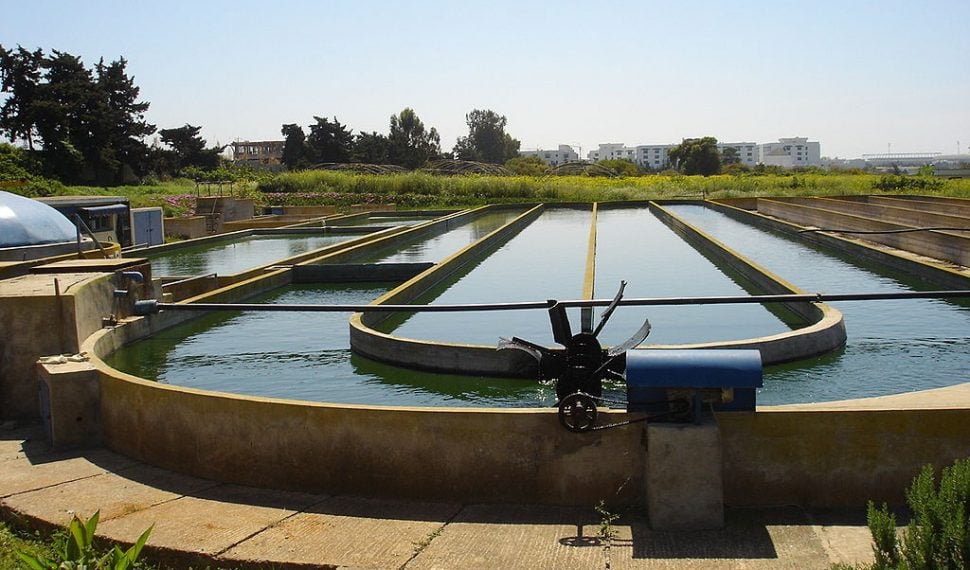
The rate of wastewater treatment is still low in many MENA countries. Many wastewater treatment plants are poorly maintained and operate beyond the design capacity.[24] [25] The main challenges facing the treatment and reuse of wastewater in MENA countries are:[26]
- Inadequate information on the status of reuse and disposal of different forms of wastewater and associated environmental and health impacts: Even when information is available, there are large variances in the assessment of wastewater because of the different criteria used.
- Incomplete economic analysis of the wastewater treatment and reuse options: There are costs and benefits associated with specific wastewater treatment and reuse systems. However, the analyses are usually restricted to financial feasibility. Other factors should also be considered, such as centralized and decentralized treatment options, degree of treatment, intended final reuse and transportation options for treated effluent.
- Perceived high cost of developing wastewater collection networks and wastewater treatment plants: Wastewater treatment facilities and costs vary from one location to another and are based on the infrastructure needed, the quality of the wastewater collected and the anticipated quality of the treated wastewater.
- Lack of wastewater treatment and reuse cost-recovery mechanisms, including commitment to support wastewater treatment programmes: This has led to low demand for cost-based reclaimed water when compared with treated or untreated wastewater supplied free of charge to farmers. This is because both farmers and households are sceptical about the quality of the reclaimed water. Besides, the availability of free, untreated wastewater makes it difficult to convince farmers to pay anything for reclaimed water that is not of high quality.[27] [28] [29]
- Preference for freshwater over wastewater: Lack of commitment on the part of governments to advocate and support comprehensive wastewater treatment programmes has led to a lack of understanding among the public about the perceived environmental benefits of wastewater treatment and reuse of reclaimed water. Moreover, final users are sceptical about the quality of the reclaimed water.
- The mismatch between water pricing and water scarcity: Water pricing should consider its scarcity value. This aspect has particular importance in the agricultural sector. The price of fresh water delivered to farmers does not reflect even the cost of water supply.[30] Because wastewater is collected away from urban areas, households do not recognize the benefits of wastewater treatment and reuse amid extreme water scarcity. Governments therefore find it easier to collect fees for connection and wastewater service than for eventual treatment of wastewater.
- Overall inefficient irrigation and water management schemes, which undermine the potential of water reuse: Management schemes often do not pay attention to the potential of reclaimed water as a resource that can be used for irrigation, environmental conservation and other purposes, such as groundwater recharge and municipal, recreational or industrial uses.
Investments in wastewater treatment: the role of private sector and international organisations in MENA countries
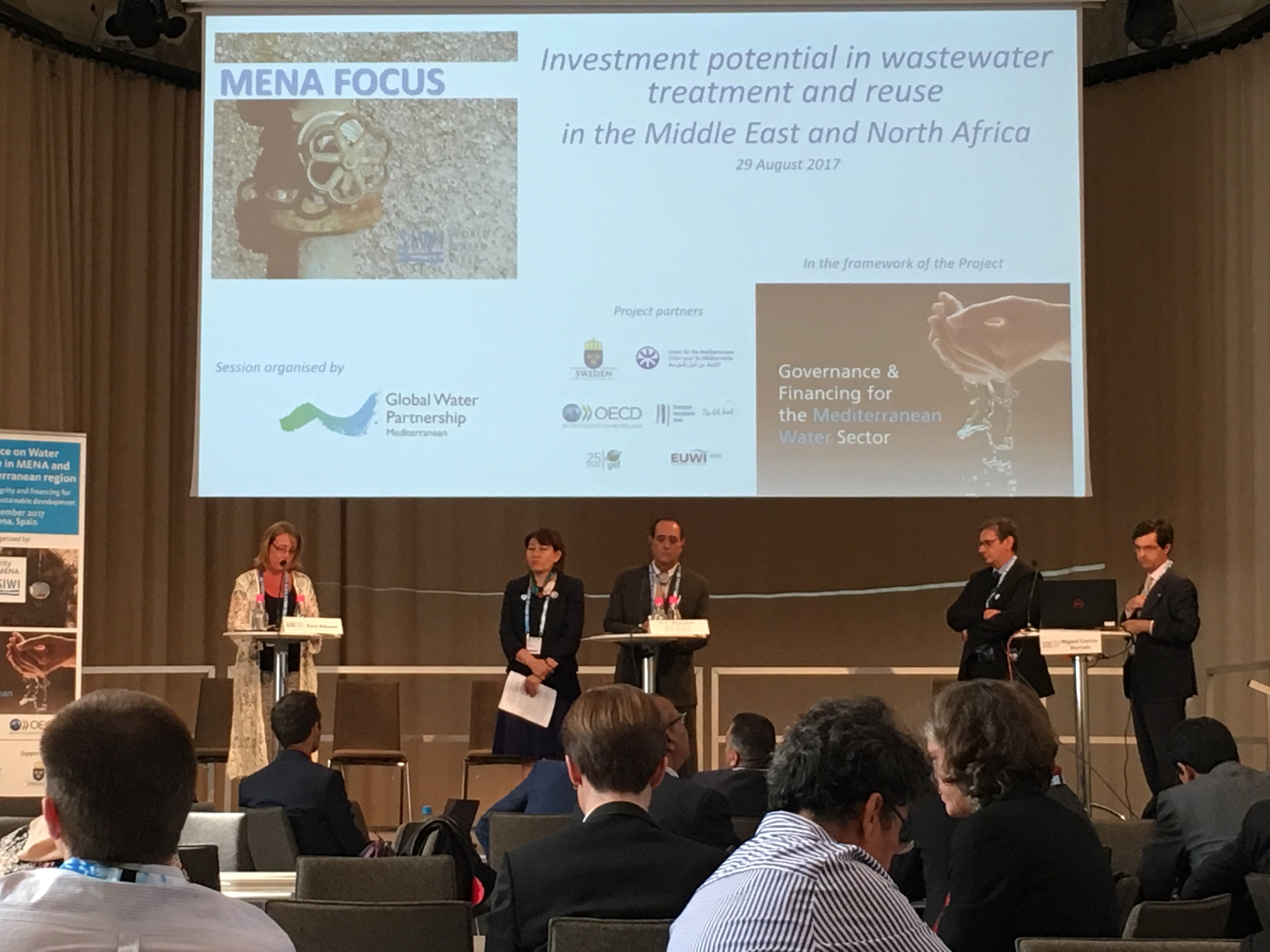
Photo 4: A lecture on investment potential on waste water treatment and reuse in MENA, during the world water week.
By: Rossella Messina
Wastewater reuse is among the main alternatives to overcome water scarcity challenges and to meet the current water needs, and it was the theme of this year’s World Water Week organized by the Stockholm International Water Institute (SIWI). The Middle East and North Africa (MENA) region was one of the core focus areas, with academics and politicians discussing their work in public sessions and private meetings.
Currently, only half of the wastewater produced in the MENA region is collected, and from the collected fraction, 57% goes back to the environment untreated, this is a wasted potential.[31] In a region where 80% of the water use is for agriculture,[32]reusing treated wastewater for agricultural purposes could allow the reallocation of water to the domestic sector, since in many countries the per capita availability is below the water poverty line (less than 1000 m3/capita/year).[33] Additionally, the use of treated wastewater could relieve the stress on unsustainable water resources, especially for countries such as Libya or Saudi Arabia where ‘fossil’ groundwater from non-renewable aquifers represents more than 70% of the total water withdrawals.[34]
Building and maintaining wastewater treatment infrastructure requires large-scale investments. In many countries, public-private partnerships (PPP) play a crucial role in realizing such investments. The MENA region is rich with positive examples, for instance in Jordan where several build-operate-transfer (BOT) projects have been established to improve the water supply for the capital Amman, which will also benefit the Red Sea-Dead Sea project.[35] Or in Egypt, where the New Cairo Wastewater Treatment Plant was the first PPP in the country.[36]
The private sector is often reluctant to participate in new water projects, due to the political instability of the region, the lack of adequate policies and the difficult coordination between stakeholders. This is where international organizations can play a role. In 2013, the Global Water Partnership (GWP) initiated a project on governance and finance for the Mediterranean water sector, which so far has focused on Jordan, Tunisia and Palestine. The aim of the project is to bring together stakeholders and host technical workshops to diagnose key governance bottlenecks and find common ground for future strategies. In Jordan, the focus was on clarifying the responsibilities of the different water authorities[37]and on the possibility of establishing a dedicated regulatory body aimed at improving and monitoring the efficiency of the water sector.[38] For Tunisia, one of the main outcomes was stimulating small-scale private sector investments in the water sector, starting with reviewing the past successful examples. In the long term, the country could initiate BOT arrangements for the development of new wastewater treatment infrastructure such as desalination plants.[39]
Unfortunately, agreements are not a guarantee that investments will be made. Value-for-money analysis and solid budget management should be at the source of any PPP. Many countries will also need to review their water policies and tariffs if investors are to be attracted. Even if new infrastructure is built, it could be difficult to maintain in the long term, since in most of the MENA countries water fees are among the lowest in the world – not reflecting the scarcity of water in the region.[40] Strengthening the information base and increasing the availability and accessibility of data is another way to attract investors. Some countries have recently started working in this direction. For instance, Palestine established the Water Sector Regulatory Council (WSRC) in 2014, although it took two years to begin its work. The institution is tasked with ensuring equitable water tariffs and at the same time making data on the water sector publicly accessible.[41]
A lack of data, limited stakeholder participation and finance are only some of the obstacles that wastewater treatment programmes face in the MENA region.[42] At the core of meetings such as the World Water Week is the will of international organizations such as SIWI or GWP to enable a consistent base for concrete actions. As Oyun Sanjaasuren, the chair of GWP, underlined, “If we focus on pre-investments for knowledge and capacity building, then the finance can be unlocked.”[43]
[1] McKenzie, C. (2005). ‘Wastewater reuse conserves water and protects waterways’. The National Environmental Services Center (NESC). Available at: www.nesc.wvu.edu/ndwc/articles/OT/WI05/reuse.pdf.
[2] Evine, A.D., Asano, T. (2004). ‘Recovering sustainable water from wastewater’. Environmental Science and Technology, 38: 201A–208A.
[3] Allan, J.A. (2001). The Middle East water question: hydropolitics and the global economy. Tauris & Co. Ltd, London.
[4] Bahadir, M.E. (2016). ‘Wastewater Reuse in Middle East Countries – A Review of Prospects and Challenges’. Fresenius Environmental Bulletin, 25(5): 1284-1304.
[5] Jagannathan, N.V., Mohamed, A.S., Kremer, A. (2009). Water in the Arab World: management perspectives and
innovations. The World Bank, Middle East and North Africa (MENA) Region, Washington.
[6] Bahadir, M.E. (2016). ‘Wastewater Reuse in Middle East Countries – A Review of Prospects and Challenges’. Fresenius Environmental Bulletin, 25(5): 1284-1304.
[7] Bahri, A. (2008) ‘Water reuse in Middle Eastern and North African countries’. In: Jimenez, B., Asano, T. (eds), Water reuse: an international survey of current practice, issues and needs. IWA, London, pp. 27-47.
[8] Qadir, M., Sharma, B.R., Bruggeman, A., Choukr-Allah, R., Karajeh, F. (2007). ‘Non-conventional water resources and opportunities for water augmentation to achieve food security in water scarce countries’. Agricultural Water Management, 87: 2-22.
[9] Qadir, M., Bahri, A., Sato, T., al-Karadsheh, E., (2009). ‘Wastewater production, treatment and irrigation in Middle East and North Africa’. Irrigation Drainage Systems, 24(37), combined 1-2.
[10] Jeuland, M. (2015). Challenges to wastewater reuse in the Middle East and North Africa.
[11] IPCC (International Panel on Climate Change) (2007). Climate change 2007: the physical science basis. Cambridge University Press, Cambridge.
[12] Trenberth, K.E., Dai, A., Rasmussen, R.M., Parsons, D.B. (2003). ‘The changing character of precipitation’. Bulletin of the American Meteorological Society, 84: 1205-1217. Available at: www.researchgate.net/publication/235640653_The_Changing_Character_of_Precipitation
[13] Aquastat, accessed in March 2017. Available at: www.fao.org/nr/water/aquastat/water_res/index.stm.
[14] Ibid.
[15] Qadir, M., Bahri, A., Sato, T., al-Karadsheh, E., (2009). ‘Wastewater production, treatment and irrigation in Middle East and North Africa’. Irrigation Drainage Systems, 24(37), combined 1-2.
[16] Aquastat, accessed in March 2017. Available at: www.fao.org/nr/water/aquastat/water_res/index.stm
[17] US Environmental Protection Agency (2004). ‘Guidelines for water reuse’. EPA/625/R-04/108. US Environmental Protection Agency, Washington.
[18] QIrrigation Drainage Systems, 24(37), combined 1-2.
[19] Ibid.
[20] Ibid.
[21] Ibid.
[22] Jeuland, M. (2015). Challenges to wastewater reuse in the Middle East and North Africa.
[23] adir, M., Bahri, A., Sato, T., al-Karadsheh, E., (2009). ‘Wastewater production, treatment and irrigation in Middle East and North Africa’.
[24] Qadir, M., Bahri, A., Sato, T., al-Karadsheh, E., (2009). ‘Wastewater production, treatment and irrigation in Middle East and North Africa’. Irrigation Drainage Systems, 24(37), combined 1-2.
[25] Qadir, M., Sharma, B.R., Bruggeman, A., Choukr-Allah, R., Karajeh, F. (2007). ‘Non-conventional water resources and opportunities for water augmentation to achieve food security in water scarce countries’. Agricultural Water Management, 87: 2-22.
[26] Qadir, M., Bahri, A., Sato, T., al-Karadsheh, E., (2009). ‘Wastewater production, treatment, and irrigation in Middle East and North Africa’. Irrigation Drainage Systems, 24(37), combined 1-2.
[27] Bahri, A. (2000). ‘The experience and challenges of reuse of wastewater and sludge in Tunisia’. Water Week 2000, 3-4 April 2000. World Bank, Washington, p. 15.
[28] Lahlou, A.A. (2005). ‘Wastewater reuse’. In: Baroudy, E., Lahlou, A.A., Attia, B. (eds), Managing water demand:
policies, practices and lessons from the Middle East and North Africa forums. IWA, London, pp. 11-24.
[29] Kfouri, C., Mantovani, P., Jeuland, M. (2009). ‘Water reuse in the MENA region: constraints, experiences and policy recommendations’. In: Jagannathan et al. (eds), Water in the Arab World: management perspectives and
innovations. The World Bank, Middle East and North Africa (MENA) Region, Washington, pp. 447-477.
[30] Ibid.
[31] World Bank, 2017. Beyond Scarcity: Water Security in the Middle East and North Africa. MENA Development Series. World Bank, Washington, DC.
[32] Ibid.
[33] www.un.org/waterforlifedecade/scarcity.shtml
[34] water.fanack.com/specials/wastewater-treatment-reuse-mena-countries
[35] water.fanack.com/specials/red-sea-dead-sea-project
[36] World Bank, 2017. Beyond Scarcity: Water Security in the Middle East and North Africa. MENA Development Series. World Bank, Washington, DC.
[37] water.fanack.com/jordan/water-management
[38] www.oecd-ilibrary.org/governance/water-service-governance-in-jordan_9789264213753-en
[39] www.oecd-ilibrary.org/governance/water-governance-in-tunisia_9789264174337-en
[40] World Bank, 2017. Beyond Scarcity: Water Security in the Middle East and North Africa. MENA Development Series. World Bank, Washington, DC.
[41] Link to interview with Mohammad al-Hmaidi.
[42] water.fanack.com/specials/wastewater-treatment-reuse-mena-countries/challenges-wastewater-treatment-reuse-mena-region
[43] programme.worldwaterweek.org/event/6753-mena-focus—investment-potential-in-wastewater-treatment-and-reuse
